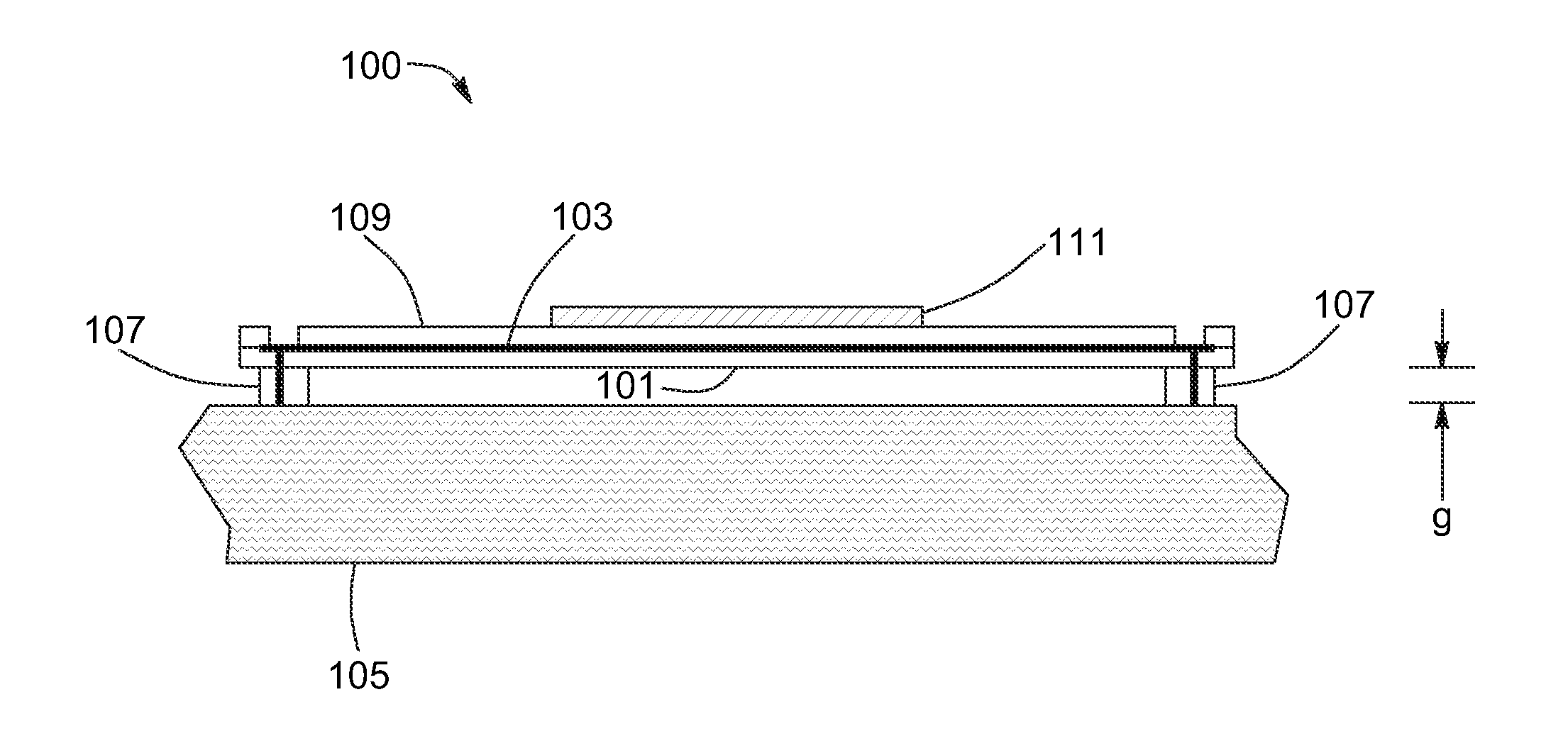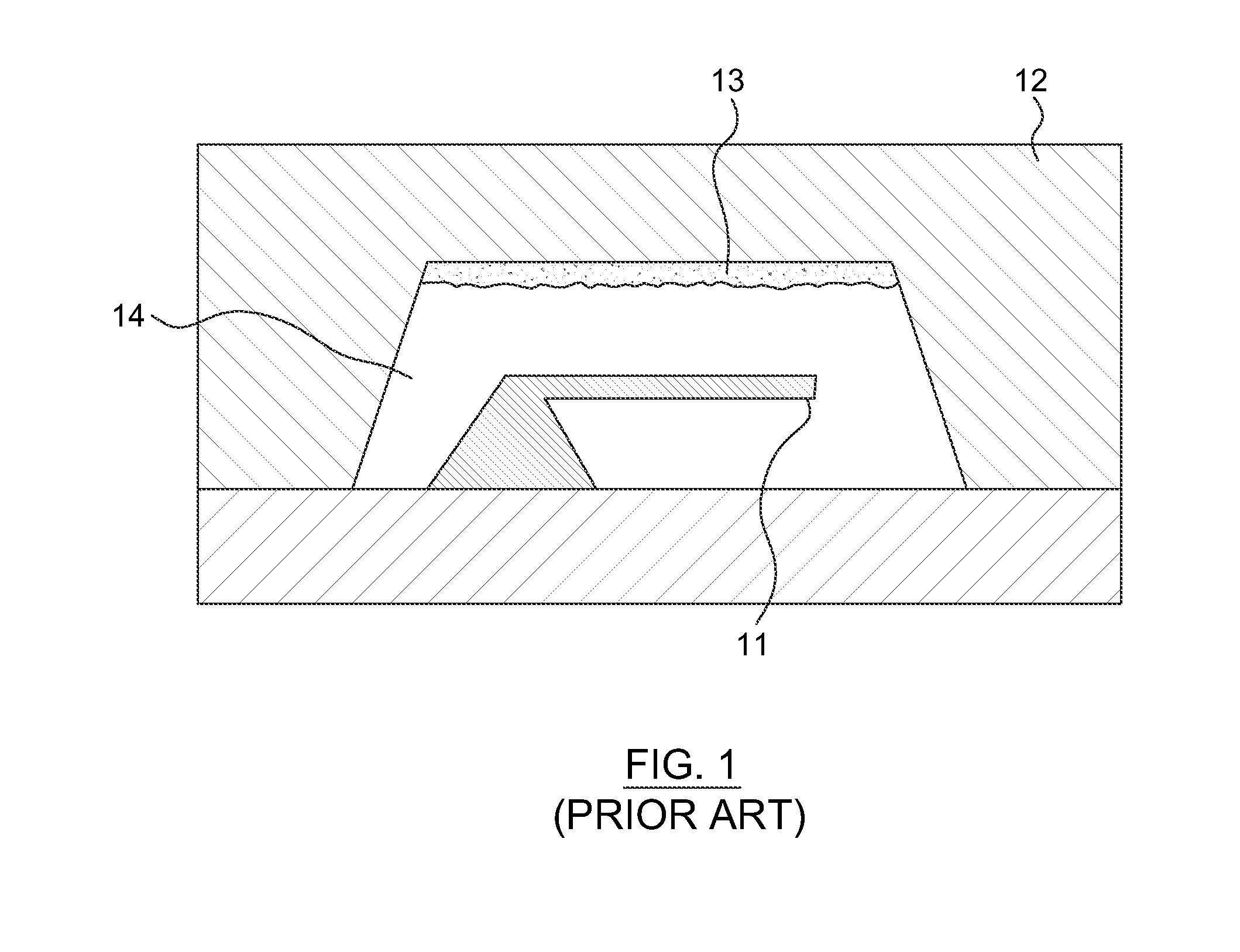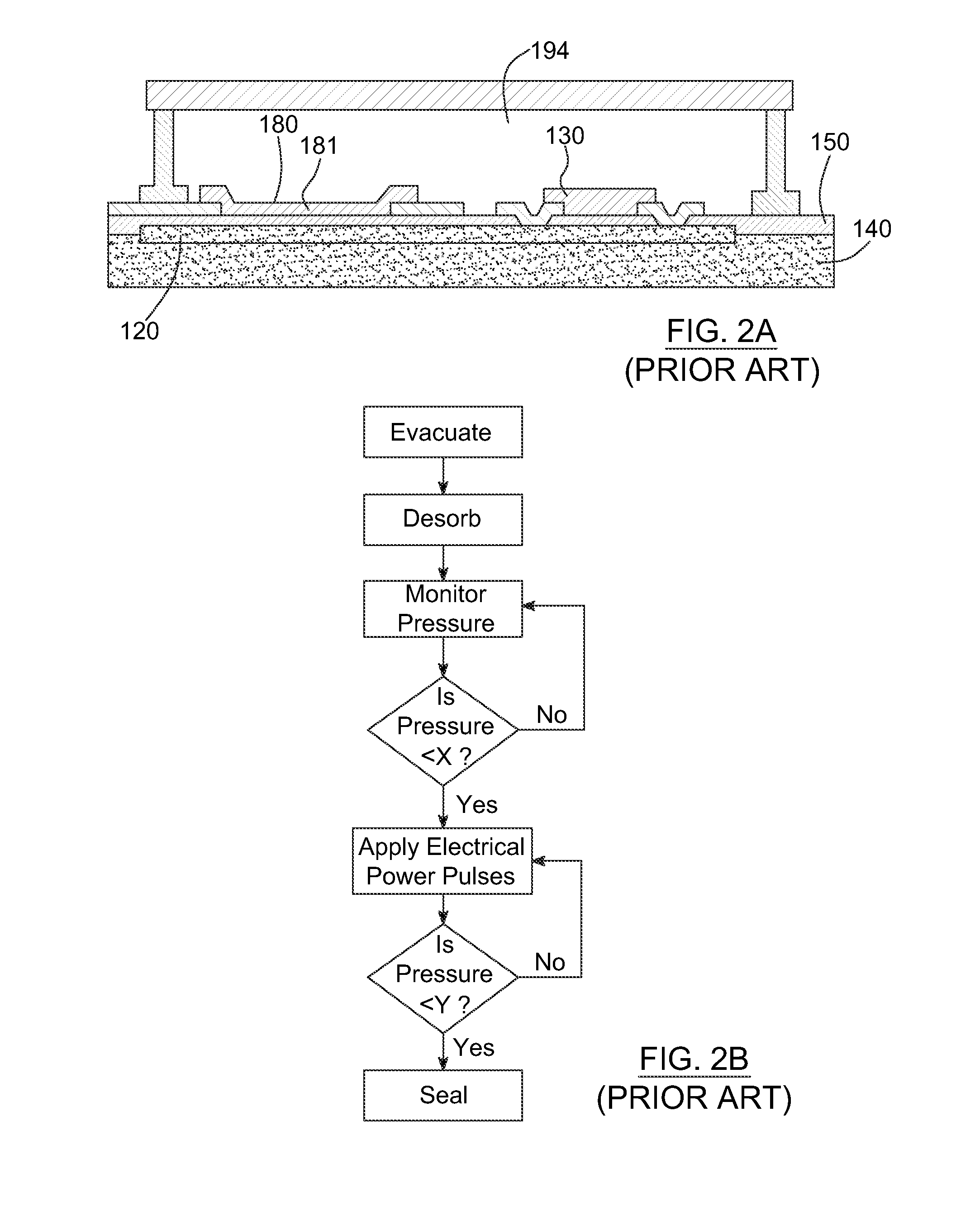MEMS-based getter microdevice
a micro-device and getter technology, applied in the field of micro-devices, can solve the problems of affecting the operation of the device housing, affecting the performance of the device, so as to prevent the degradation of the cmos circuitry or, achieve more precise pressure measurements
- Summary
- Abstract
- Description
- Claims
- Application Information
AI Technical Summary
Benefits of technology
Problems solved by technology
Method used
Image
Examples
Embodiment Construction
[0028]The accompanying drawings are not intended to be drawn to scale, and like reference numerals designate identical or corresponding parts throughout the views to be discussed in the following paragraphs. FIG. 5 illustrates a schematic cross-sectional side view of a preferred embodiment of a MEMS getter microdevice 100. The microdevice 100 includes a suspended structure (also referred to as a platform) 101 on which an electrically-resistive (resistor) element 103 has been patterned on its top surface. The suspended structure 101 is typically made up of a dielectric material such as but not limited to Si, SiO2, Si3N4 or silicon oxinitride. The structure 101 is supported by supporting legs 107 in such a way that a vertical gap g is formed above the substrate 105 on which the microdevice 100 is fabricated. The supporting legs 107 also provide thermal insulation of the suspended structure 101 and of the various layers deposited thereon. This means that the design of the supporting le...
PUM
 Login to View More
Login to View More Abstract
Description
Claims
Application Information
 Login to View More
Login to View More - R&D
- Intellectual Property
- Life Sciences
- Materials
- Tech Scout
- Unparalleled Data Quality
- Higher Quality Content
- 60% Fewer Hallucinations
Browse by: Latest US Patents, China's latest patents, Technical Efficacy Thesaurus, Application Domain, Technology Topic, Popular Technical Reports.
© 2025 PatSnap. All rights reserved.Legal|Privacy policy|Modern Slavery Act Transparency Statement|Sitemap|About US| Contact US: help@patsnap.com



